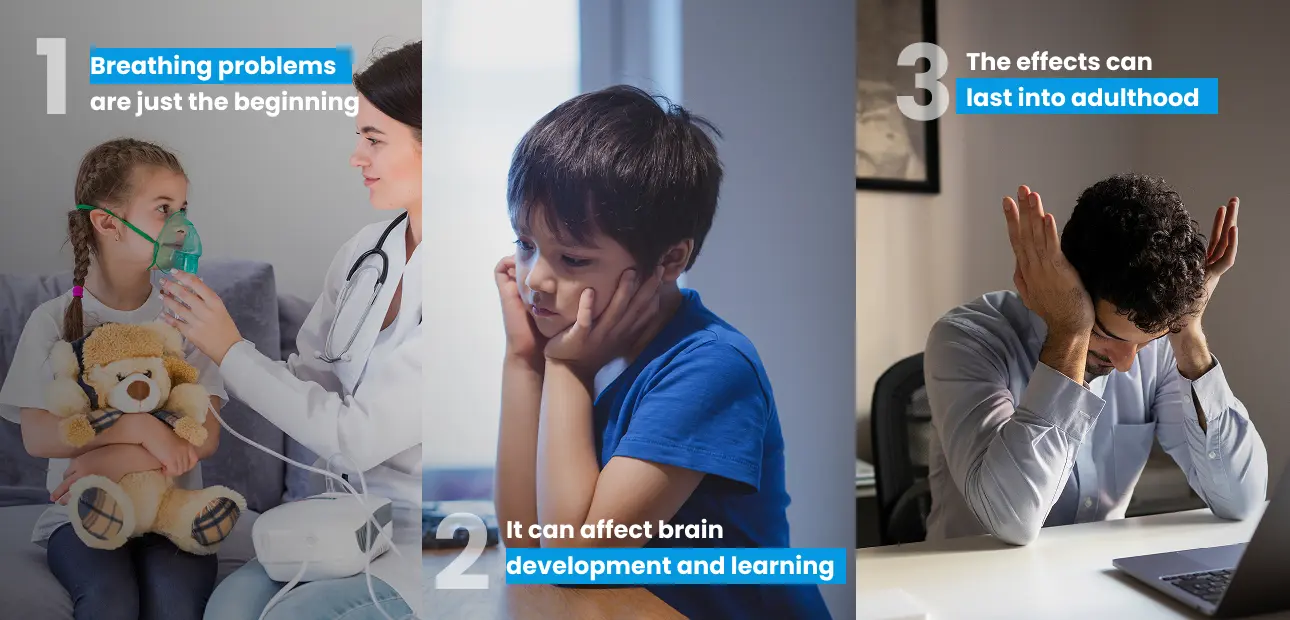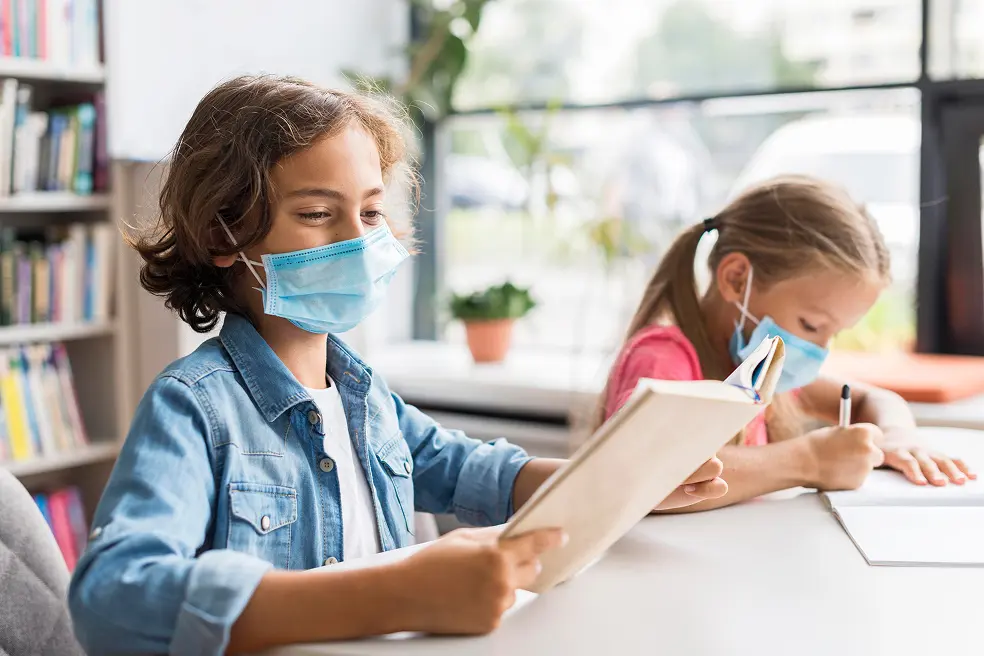Every day, you happily wave goodbye to your children as they head to school—but do you know that where they’re spending those 6–7 hours each day could be putting their lives at risk? Yes, classrooms and schools are threatening your child’s life! And it’s all because of the indoor air quality in schools. You can keep an eye on your child at home, but what about when they’re at school? This is a serious concern you might be overlooking, and it could even be affecting your child’s ability to study.
As parents, we usually focus on our children’s grades and safety at school. But there’s something just as important that we often forget—the air they breathe. According to the U.S. Environmental Protection Agency (EPA), up to half of all schools have indoor air quality (IAQ) problems. That’s a big deal.
Kids spend a lot of time in classrooms, and because their bodies and immune systems are still growing, they are more sensitive to polluted air. Poor air quality can cause serious health issues like asthma, and over time, it can even affect how well they think and learn.
In this blog, we’ll explore how classroom air quality can impact your child’s health—and what you can do to protect them from these risks!
Common Pollutants in Classrooms Affecting Indoor Air Quality in Schools
Classrooms can have many sources of indoor air quality in schools. According to the American Lung Association and the EPA, here are some of the most common pollutants, where they come from, and how often they’re found in schools:
| Pollutant | Where It Comes From | How Common It Is |
| Mouse droppings, pests, and pet dander | Poor building maintenance, animals in the classroom | Often found in older or poorly maintained schools |
| Scents, chemicals, mold | Cleaning products, damp areas, building materials, Chalks | Very common, especially in humid areas |
| Carbon dioxide (CO₂) | Poor air circulation, crowded rooms | High in rooms with bad ventilation |
| Diesel fumes | Idling school buses nearby | Common in busy city areas with lots of traffic |
| Asbestos | Old building materials | Found in very old school buildings |
| Cleaning chemicals | Cleaning and maintenance work | Common, especially with frequent cleaning |
| Radon | Naturally seeps from the ground into buildings | Varies by area, needs testing to detect |
How Poor Air Quality Affects Children’s Health – It’s More Than Just Breathing Problems
Many parents don’t realize how much the air their kids breathe at school can affect their health, both now and in the future. Let’s break it down in a way that’s easy to understand and hits close to home:

1. Breathing Problems Are Just the Beginning
Polluted air in classrooms can cause or worsen conditions like asthma and bronchitis. Mold, dust, and diesel fumes from school buses are common triggers. In fact, the American Lung Association says 1 in 13 school children has asthma—making this a serious issue.
Studies show that poor air quality doesn’t just cause more sick days—it can also slow down lung growth and make kids more likely to get infections.
2. It Can Affect Brain Development and Learning
Even smart and curious kids can struggle to focus if they’re breathing in polluted air every day. Research from the found that exposure to air pollution during pregnancy and early childhood can lower memory, attention, and learning skills.
Another study showed that tiny, harmful particles in the air can even damage developing brains, leading to long-term problems with learning and behaviour. This means bad air can hurt your child’s performance in school and how they feel about learning.
3. The Effects Can Last Into Adulthood
It’s not just about childhood illnesses. Breathing in polluted air for years can raise the risk of heart disease, lung cancer, and even mental health issues later in life. Some studies also suggest that air pollution could be linked to developmental disorders like autism.
How Air Pollution Affects Children’s Brains and Bodies – The Science Made Simple
Here’s an easy breakdown of how common pollutants affect children’s health and brain development:
1. Tiny Particles (PM2.5) – Small but Dangerous
These are super small particles that float in the air and can go deep into the lungs when breathed in. From there, they can get into the bloodstream and cause inflammation all over the body. Even more concerning, they can reach the brain, causing swelling (neuroinflammation) and possibly changing how the brain grows and works. This can affect memory, attention, and learning.
2. Carbon Monoxide (CO) and Carbon Dioxide (CO₂) – Silent Interferers
- Carbon Monoxide comes from things like nearby traffic or heaters. It sticks to red blood cells and keeps them from carrying oxygen. Less oxygen to the brain means tiredness, headaches, and trouble focusing.
- Carbon Dioxide, which builds up in stuffy, poorly ventilated classrooms, can make kids feel drowsy and unfocused, hurting their ability to learn.
3. Volatile Organic Compounds (VOCs) – Hidden in Everyday Products
These are chemicals that come from cleaning products, paint, furniture, and building materials. Thus, VOCs can cause breathing problems, allergies, and even impact the brain. For example like formaldehyde is known to harm brain cells and affect thinking and behaviour.
4. Nitrogen Dioxide (NO₂) – From Cars to Classrooms
This gas mainly comes from vehicle emissions. Breathing in NO₂ can irritate the lungs and has also been linked to lower brain function and learning issues in children.
How to Protect Your Child’s Indoor Air Quality in Schools?
Both parents and schools have an important role in keeping the air clean and safe for children such as:
1. Speak Up for Better Indoor Air Quality in Schools
Talk to your child’s school about checking and improving air quality. Ask them to:
- Install air quality monitors and Purifiers
- Keep ventilation systems well-maintained
2. Use an Air Purifier at Home
A good air purifier can make a big difference by removing tiny harmful particles, viruses, and chemicals from the air your child breathes indoors.
3. Watch the Weather and Air Quality Outside
On days when air pollution levels are high:
- Keep windows closed
- Use air conditioning with high-quality filters
- Limit outdoor play
4. Choose Safer Products for Your Home
Many everyday items—like cleaning sprays, air fresheners, and paints—release harmful chemicals called VOCs. When shopping, look for products labelled “low-VOC” or “VOC-free” to reduce indoor pollution.
What Schools Are Doing to Improve Indoor Air Quality?
Air pollution in schools is a serious issue—but the good news is, many schools are stepping up to fix it. Here’s how they’re making classrooms safer and healthier for kids:

1. Spotting Problems Early with Apps and Air Quality Monitors
Some schools are using apps and air quality monitors to help staff report issues. For example, is proactively enhancing indoor air quality to safeguard students’ health. The school has partnered with Prana Air to implement real-time air quality monitoring systems across classrooms and common areas. So, these systems track pollutants like PM2.5, CO₂, and TVOCs, providing immediate data to identify and address air quality issues promptly. This initiative ensures a healthier learning environment, reduces absenteeism, and supports better concentration and overall well-being for students and staff.
2. Improving Airflow and Ventilation
Bringing more fresh air into classrooms is one of the easiest and most effective ways to reduce indoor pollution. Since studies show that better ventilation helps students breathe easier, get sick less, and even score higher on tests.
3. Using Air Purifiers and Better Filters
For it, many schools are installing air purifiers or upgrading to filters that can trap harmful particles like PM2.5 and VOCs (dangerous indoor chemicals). This helps schools create clean-air zones, especially for students with asthma or allergies.
5. Teaching Everyone Why Air Quality Matters
Some schools are going beyond fixing problems—they’re also educating staff, students, and parents about what causes poor air and how to prevent it.
Let’s Make Clean Air a Priority
Cleaner air means healthier kids, fewer sick days, and better focus in the classroom. With more awareness and action, we can make schools a place where children not only learn but thrive.